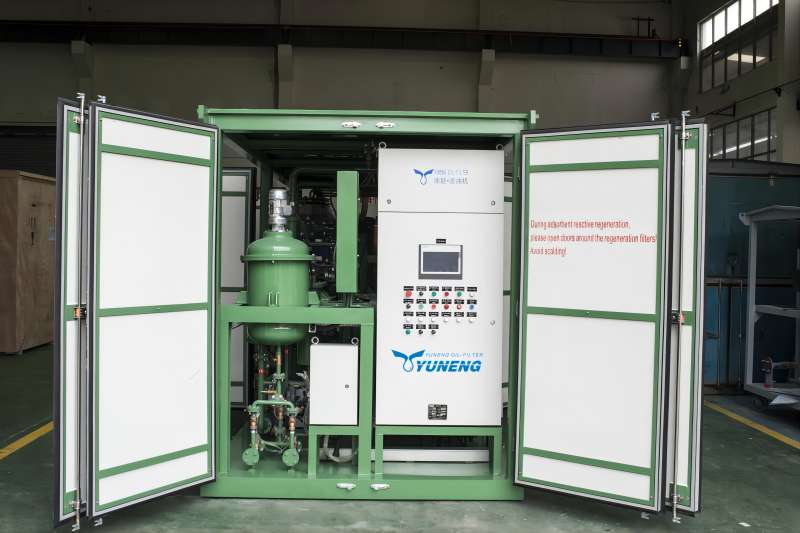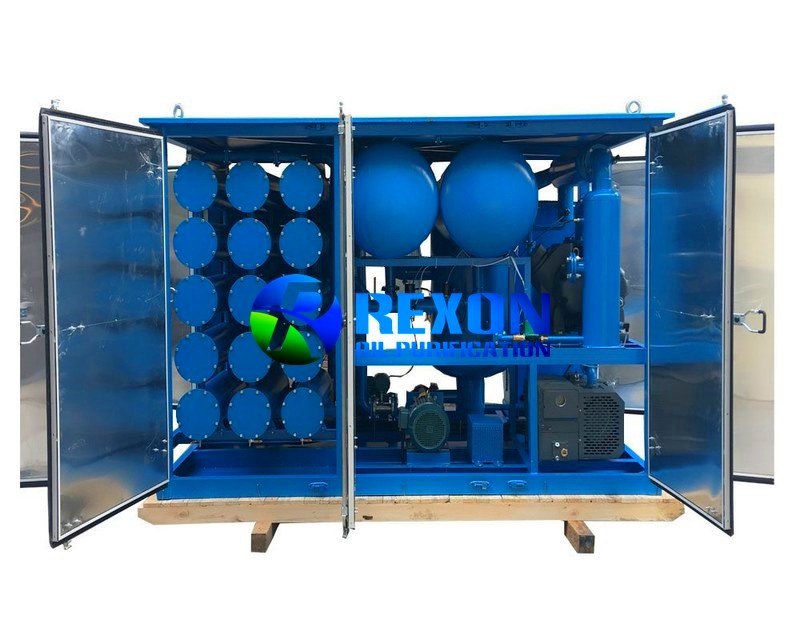Exactly How Regenerated Transformer Oil Prolongs Transformer Lifespan
The function of transformer oil is vital in making certain the integrity and long life of transformers, offering as both an insulator and coolant. Restored transformer oil uses a compelling solution to improve these functions by successfully eliminating unsafe pollutants that jeopardize efficiency.
Relevance of Transformer Oil
Transformer oil plays a crucial duty in the efficient operation of electric transformers. It mainly works as a shielding medium, making certain and preventing electrical discharges that elements operate securely under high voltage problems. The oil's dielectric buildings are fundamental to maintaining the stability of the transformer, as they minimize the risk of failings that might bring about pricey downtimes or devastating events.
Along with its shielding capabilities, transformer oil also functions as a coolant. As transformers operate, they generate heat that needs to be dissipated to stop overheating and subsequent damage. The oil distributes within the transformer, moving and absorbing heat away from critical components, thus keeping ideal operating temperatures.
Additionally, transformer oil works as an obstacle versus dampness and contaminants, which can endanger the efficiency and long life of the transformer. Its chemical properties assist in neutralizing acids and other by-products that might create in time, contributing to the general wellness of the electric system.
Benefits of Regenerated Oil

In addition, regenerated transformer oil has a lower level of impurities, consisting of bits and contaminants that can break down efficiency. This purity not only enhances the oil's thermal conductivity however likewise prolongs the operational life expectancy of transformers by reducing overheating risks. The improved thermal stability of regrowed oil ensures consistent performance also under high operating temperatures, which is vital for maintaining transformer efficiency.
Another benefit is its ecological influence. Restored oil advertises sustainability by decreasing waste and the need for new oil production, consequently reducing the carbon footprint connected with transformer maintenance. Reclaimed Transformer Oil. The longevity of restored oil translates to lower maintenance expenses over time, as fewer oil changes and much less frequent tools downtime are called for.
Refine of Oil Regrowth
The regrowth of transformer oil includes an organized procedure made to restore the oil's original properties and improve its performance. This process usually starts with the removal of the used oil from the transformer, which is then based on various purification techniques.
The initial step in the regeneration procedure is the filtering, where strong pollutants such as sludge, dust, and metal fragments are removed. This is often complied with by vacuum purification, which assists to get rid of moisture and volatile compounds, thus improving the oil's dielectric strength.

Effect On Transformer Performance
Bring back the buildings of regenerated transformer oil dramatically affects the general efficiency of transformers. Improved dielectric strength is among one of the most critical advantages, as it permits much better insulation and reduces the probability of electrical break down. This enhancement leads to a much more secure operation under high voltage problems, eventually leading to raised performance.
Furthermore, the removal of impurities and destruction items throughout the regrowth procedure decreases the risk of getting too hot. Cleanser oil helps with better heat dissipation, which is important for keeping ideal operating temperatures. Therefore, the thermal efficiency of the transformer is improved, allowing for higher tons without compromising reliability.
Moreover, the chemical stability of regenerated oil guarantees prolonged operational life. It stands up to oxidation and degradation, decreasing the frequency of maintenance treatments and oil substitute. This security not only adds to improved efficiency but additionally aligns with sustainability objectives by minimizing waste.
Future of Transformer Upkeep
As improvements in technology proceed to reshape the landscape of electrical design, the future of transformer upkeep is positioned for substantial makeover. The combination of clever innovations, such as IoT sensing units and predictive analytics, enables real-time tracking of transformer wellness, enhancing the capability to preemptively attend to issues before they intensify into major failings. This aggressive strategy not just maximizes operational efficiency yet also extends the lifespan of transformers.
Furthermore, the application of expert system (AI) in data evaluation permits even more exact fault detection and medical diagnosis. By leveraging maker learning formulas, upkeep groups can recognize patterns in operational data that human analysts may overlook, causing more enlightened decision-making.
In addition, the adoption of environment-friendly methods, consisting of making use of regenerated transformer oil, is set to redefine upkeep methods. This lasting technique not just reduces environmental effect however also boosts the general wellness of the transformer.
Finally, the shift in the direction of automation in upkeep Transformer Oil Regeneration processes is anticipated to improve procedures, minimize downtime, and lower costs. As these developments proceed to progress, the future of transformer upkeep will certainly become a lot more efficient, trustworthy, and sustainable, making certain the honesty of important electric infrastructure.
Final Thought
The usage of regenerated transformer oil considerably improves the operational longevity of transformers. By successfully recovering dielectric toughness and thermal security, this oil plays a vital duty in mitigating risks connected with getting too hot and oxidation. The regeneration process not just eliminates damaging pollutants yet additionally reduces maintenance frequency and oil replacement prices. Ultimately, the fostering of regenerated oil represents an essential innovation in transformer maintenance, ensuring optimum performance and sustainability in the monitoring of electric framework.
The function of transformer oil is vital in guaranteeing the reliability and long life of transformers, serving as both an insulator and coolant.Transformer oil plays a vital function in the efficient procedure of electrical transformers. Regenerated oil promotes sustainability by lowering waste and the requirement for brand-new oil manufacturing, thus reducing the carbon footprint linked with transformer maintenance.Bring back the properties of regenerated transformer oil considerably affects the total performance of transformers.The application of regenerated transformer oil substantially improves the operational longevity of transformers.